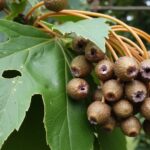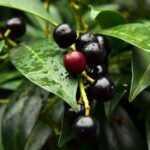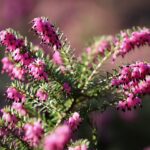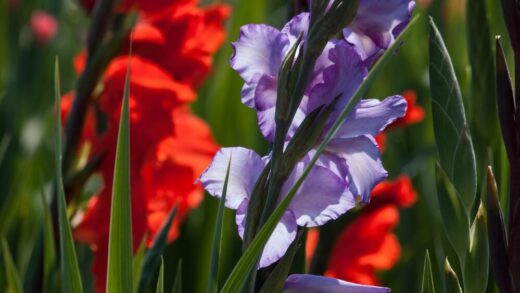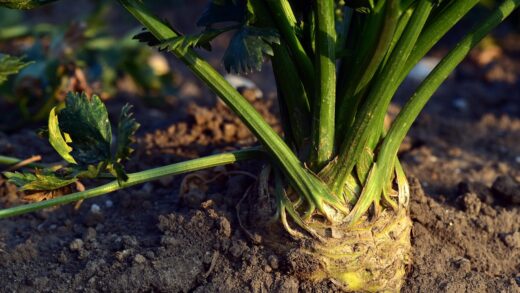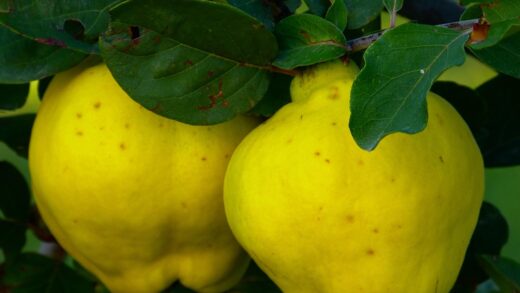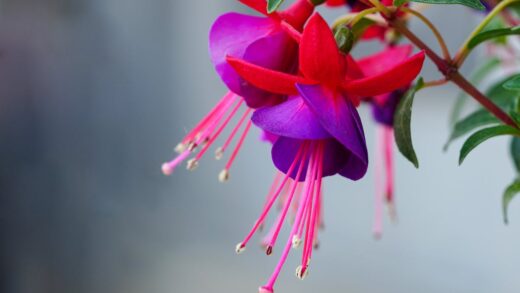The successful overwintering of a silk acacia is highly dependent on its location relative to its natural climate preferences. This tree is best suited for regions with mild to moderate winters, and its ability to withstand cold temperatures is a critical consideration for any gardener. While established trees can exhibit surprising hardiness, young or newly planted specimens are significantly more vulnerable to the damaging effects of frost, freezing temperatures, and harsh winter winds. Therefore, a thoughtful approach to winter preparation is essential, particularly for trees grown at the northern edge of their viable range.
Understanding the concept of cold hardiness is the first step in preparing a silk acacia for the dormant season. This involves not only knowing the average minimum winter temperatures for a specific geographic zone but also recognizing how factors like tree age, overall health, and specific placement in the landscape can create microclimates that influence its survival. A tree weakened by drought, disease, or poor nutrition during the growing season will enter winter in a more vulnerable state and will be less able to tolerate cold stress. Consequently, year-round proper care is the best form of winter protection.
Preparation for winter does not begin with the first frost; it starts in late summer and autumn. The actions taken during this period are focused on signaling the tree to slow down its active growth and begin the process of hardening off. This natural physiological process involves changes at the cellular level that increase the tree’s resistance to freezing. Certain gardening practices, such as late-season fertilization or excessive watering, can interfere with this crucial process, so a shift in the care routine is necessary as the days shorten and temperatures cool.
For trees in marginal zones or for those that are particularly young and valuable, providing physical protection can make the difference between survival and winter mortality. These protective measures are designed to buffer the tree from the most extreme elements, such as insulating the sensitive root zone from deep freezes or shielding the trunk from damaging temperature fluctuations. While a mature, well-sited silk acacia may require no winter intervention at all, knowing these techniques is a vital part of a comprehensive care strategy.
Understanding cold hardiness
The cold hardiness of a plant is typically defined using a system of hardiness zones, such as the USDA Plant Hardiness Zone Map, which divides regions based on their average annual minimum winter temperature. The silk acacia is generally considered reliably hardy in USDA zones 6 through 9. This means that in zone 6, it should be able to withstand average minimum temperatures between -23.3°C and -17.8°C. However, these zones are just a guideline; a particularly severe winter with temperatures that dip below the average can still cause significant damage or death, even to a tree planted within its recommended zone.
The age and health of the tree play a significant role in its ability to withstand cold. A young, newly planted tree has a less developed root system and has not had time to accumulate the energy reserves needed to endure a harsh winter. It is far more susceptible to damage than a large, mature specimen with a deep, extensive root system and thick, insulating bark. Similarly, a tree that has been stressed during the growing season by drought, pest infestation, or disease will enter dormancy in a weakened state, with lower energy reserves and a reduced capacity to tolerate freezing temperatures.
Microclimates within a garden can also have a profound impact on a tree’s winter survival. A tree planted in a sheltered location, such as on the south side of a house and protected from prevailing winter winds, will exist in a much more favorable environment than one planted in an open, exposed site. Low-lying areas, often called frost pockets, where cold, dense air settles on still nights, can be several degrees colder than higher ground just a short distance away. Understanding and utilizing the natural microclimates of a property is a key strategy for successfully growing plants at the edge of their hardiness range.
It is also important to note that damage can occur even when the temperature does not drop to the absolute minimum the tree can tolerate. Rapid temperature fluctuations can be particularly harmful. For instance, a sunny winter day that warms the tree’s trunk, followed by a sudden, sharp drop in temperature at night, can cause the bark to crack, a condition known as frost cracking. This creates a wound that can serve as an entry point for diseases. Therefore, winter survival is not just about tolerating deep cold, but also about withstanding the dynamic and often harsh conditions of the entire season.
Preparing the tree for winter
The process of preparing a silk acacia for winter should begin in late summer. One of the most important steps is to cease all fertilization by mid-summer. Applying fertilizer, especially those high in nitrogen, late in the season encourages a flush of new, tender growth. This new growth will not have adequate time to mature and harden off before the first frosts arrive, making it extremely vulnerable to being killed by the cold. Halting fertilization allows the tree to naturally shift its focus from producing new growth to preparing its existing tissues for dormancy.
Watering practices should also be adjusted in the autumn. While the tree should not be allowed to enter winter in a state of severe drought stress, supplemental watering should be gradually reduced as the weather cools. This reduction in water availability is another natural signal for the tree to slow its metabolic processes and begin to harden off. However, if the autumn is exceptionally dry, it is advisable to give the tree one final, deep watering before the ground freezes solid. This ensures the roots are well-hydrated, which helps protect them from desiccation in frozen soil.
Good sanitation around the base of the tree is another important autumn task. Raking up and disposing of fallen leaves and other debris is beneficial for several reasons. This material can harbor fungal spores or the overwintering eggs of insect pests, which could cause problems in the following spring. Removing this debris reduces the likelihood of disease and pest carryover from one season to the next. It also discourages rodents like voles and mice from nesting near the base of the tree, where they might chew on the bark during the winter for sustenance.
For young trees, a critical part of winter preparation is ensuring they are structurally sound. Any broken or damaged branches should be pruned off before winter, as they can be further damaged by the weight of snow or ice, potentially causing larger wounds. However, major structural pruning should be left until the late winter or early spring dormant period. The focus in autumn is solely on removing existing hazards to prevent further damage during winter storms.
Protective measures for vulnerable trees
For young silk acacias (those in the ground for three years or less) or for any tree planted in a zone at the colder end of its hardiness range (like zone 6), providing physical protection is a wise investment. The most important area to protect is the root system, which is more sensitive to cold than the above-ground parts of the tree. Applying a thick layer of organic mulch around the base of the tree is the most effective way to insulate the roots.
A layer of mulch, about 10-15 centimeters deep, made from materials like wood chips, shredded bark, or straw, should be applied over the root zone after the first hard frost but before the ground freezes solid. This timing is important as applying it too early can keep the soil too warm and delay dormancy. The mulch should be spread out to the tree’s drip line but must be kept pulled back several inches from the trunk itself. Piling mulch directly against the bark can trap moisture, leading to rot, and provides cover for rodents that may girdle the tree.
Protecting the trunk of young, thin-barked trees is also important to prevent sunscald and frost cracking. This can be done by wrapping the trunk with a commercial tree wrap, which is a breathable, crepe-like paper, or by using a plastic tree guard. The wrap should be started at the base of the tree and wrapped upwards to the first set of branches. It should be applied in the late autumn and removed promptly in the spring to prevent it from constricting the trunk as it grows and to avoid creating a haven for insect pests.
In very cold climates or for particularly prized specimens, a more extensive shelter can be constructed. This might involve creating a burlap screen on the windward side of the tree to protect it from desiccating winter winds. For very small trees, a frame can be built around them and covered with burlap, with the inside loosely filled with insulating material like straw or fallen leaves. This creates a protective micro-environment that buffers the tree from the harshest winter conditions, significantly increasing its chances of survival.
Assessing and managing winter damage
Once the threat of the last hard frost has passed in the spring, it is time to carefully inspect the silk acacia for any signs of winter damage. The assessment should begin after the tree has had a chance to start leafing out, as this makes it much easier to distinguish between living and dead wood. It is important to be patient, as some trees may be slow to leaf out, especially after a particularly harsh winter. Pruning too early could result in the removal of branches that were still alive and would have eventually produced new growth.
The most common form of winter damage is dieback, where the tips of the branches have been killed by the cold. This is easily identified as the affected parts will be brittle, show no signs of swelling buds, and will not have the flexible, greenish tissue under the bark that is characteristic of living wood. To confirm if a branch is dead, one can use a thumbnail or a sharp knife to gently scrape a small section of the bark; if the tissue underneath is brown and dry, that part of the branch is dead.
Once the extent of the damage has been clearly identified, the dead wood should be pruned out. Using sharp, clean pruning tools, make cuts back to the nearest living, healthy tissue. This is typically just above an outward-facing live bud or at a junction with a larger, healthy branch. Making clean cuts will help the tree heal more quickly and will prevent the dead stubs from becoming potential entry points for diseases or pests. This pruning also improves the tree’s appearance and directs its energy towards new, healthy growth.
In cases of severe winter damage, where a significant portion of the above-ground tree has been killed, it is possible that the root system has survived. The silk acacia can sometimes re-sprout from its base even if the entire top has been killed back to the ground. If no growth is apparent on the main stems, it may be worth waiting until early summer to see if any new shoots emerge from the roots. If they do, the dead top can be cut away completely, and one or more of the new shoots can be selected and trained to become a new trunk.

